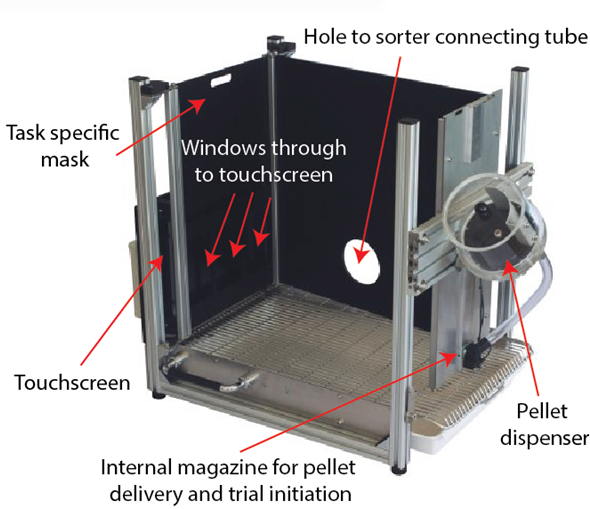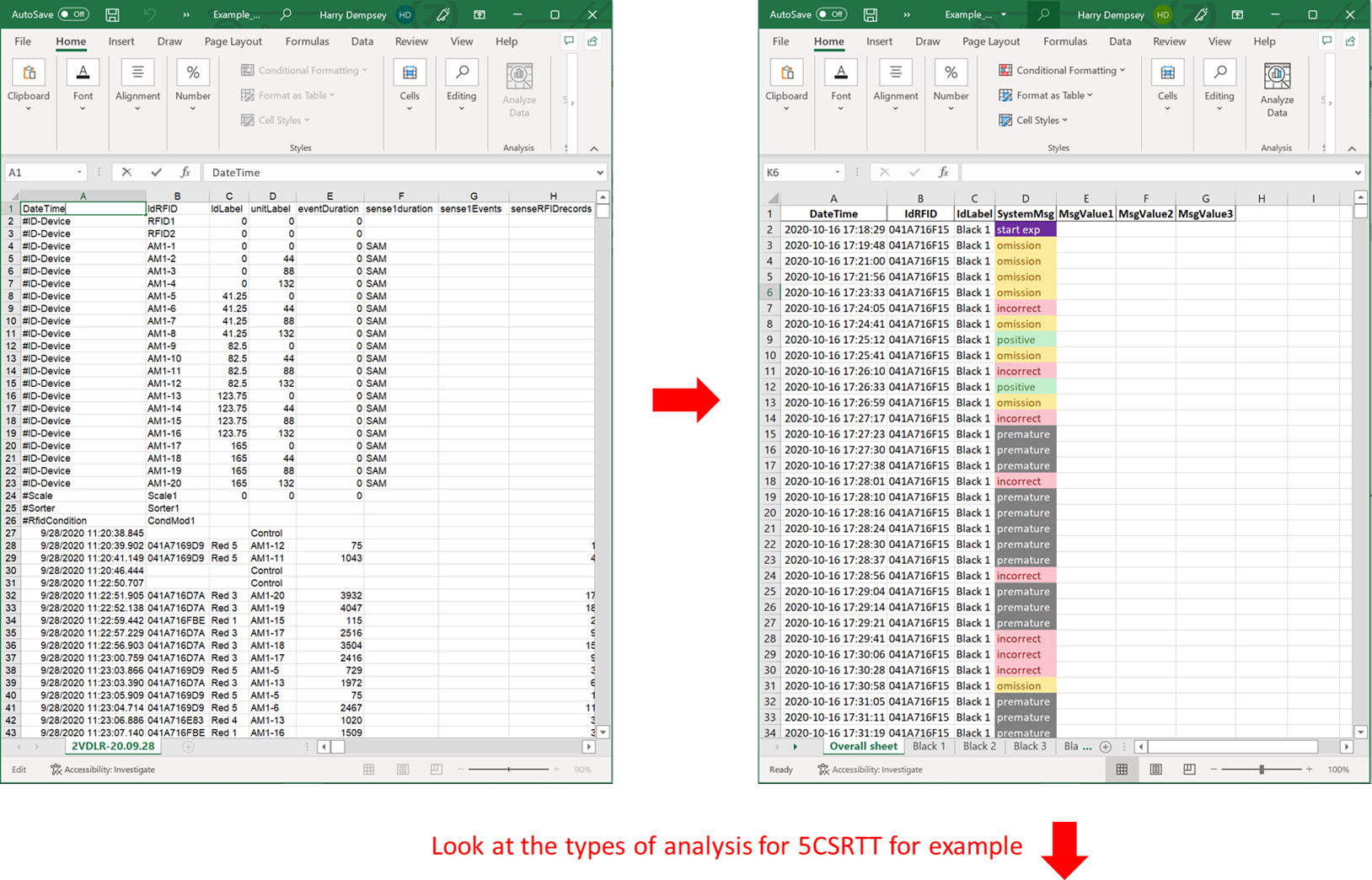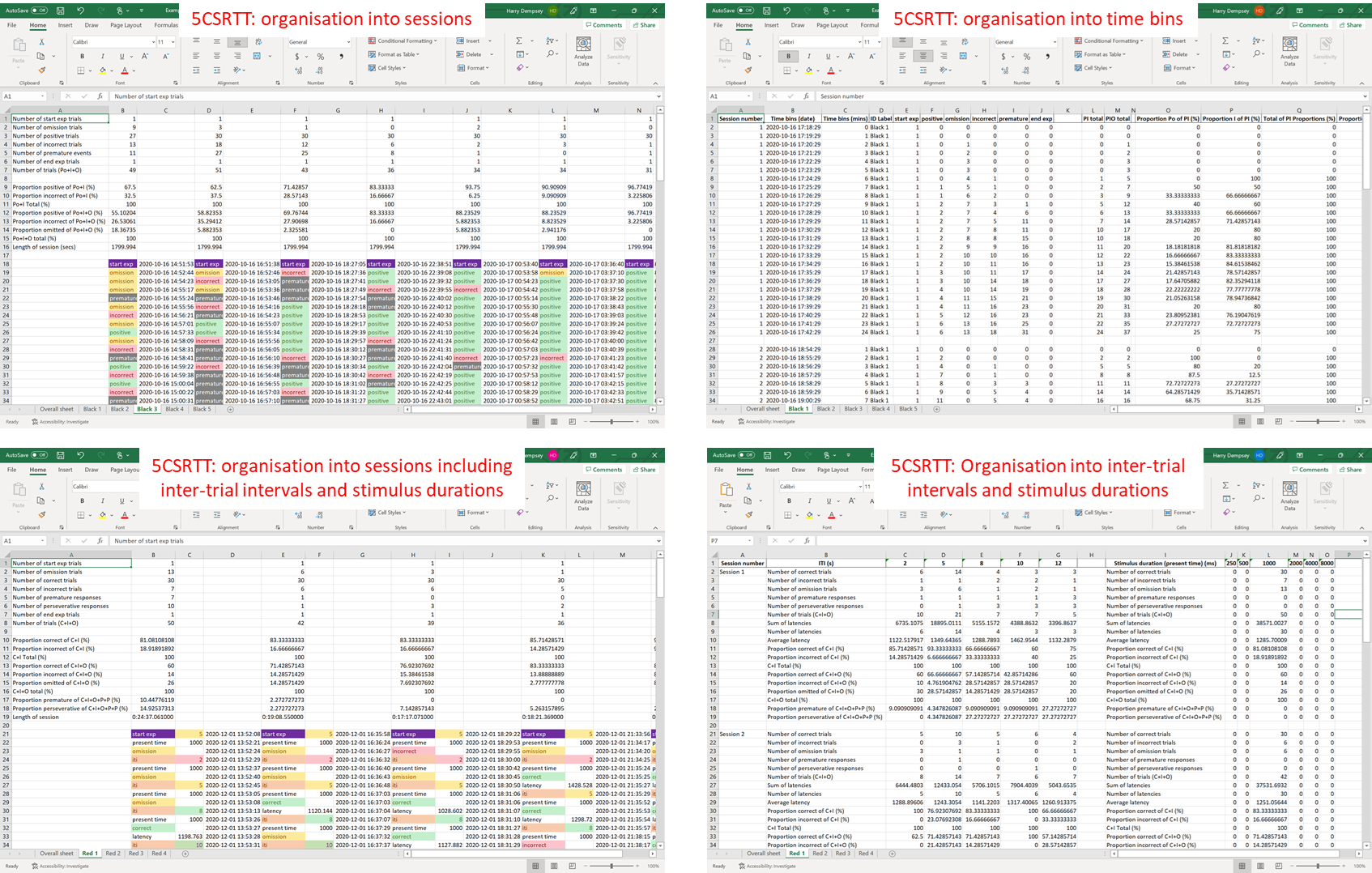PhenoSys Touchscreen Chamber
The Touchscreen Chambers from PhenoSys contain a pellet dispenser and images/touch screens. These screens light up and need to be pressed in the correct order to receive a pellet as a reward. This apparatus has enabled the measurement of learning over time in novel models of disease in rodents.
Purpose
The raw CSV output from the Touchscreen Chambers is large (~5 MB) and is highly time-consuming to process and obtain statistics of interest. This repository:
- Analyses the data from the paradigms GTPT2-5, 2VDLR, 5CSRTT and TUNL.
- Creates a colour-coded list of all key events in order of time.
- For each animal, these codes creates statistics about:
- Individual sessions
- Indvidual sessions split by stimulus durations and inter-trial intervals
- Time bins over time
- Snips videos for each experiment into many session clips
Preview of the graphical user interfaces
Input and output data
Install Anaconda Navigator.
Open Anaconda Prompt (on Mac open terminal and install X-Code when prompted).
Download this repository to your home directory by typing in the line below.
git clone https://github.com/Foldi-Lab/PhenoSys-codes.git
If you receive an error about git, install git using the line below, type "Y" when prompted and then re-run the line above.
conda install -c anaconda git
Change the directory to the place where the downloaded folder is.
cd PhenoSys-codes
Create a conda environment and install the dependencies.
conda env create -n PSC -f Dependencies.yaml
Open Anaconda Prompt (on Mac open terminal).
Change the directory to the place where the git clone was made.
cd PhenoSys-codes
Activate the conda environment.
conda activate PSC
Run the codes.
python PhenoSys.py
View the guide about how to analyse your PhenoSys data.
Author:
Harry Dempsey (Andrews lab and Foldi lab)
Credits:
Laura Milton, Stephen Power, Claire Foldi, Zane Andrews, Karsten Krepinsky, Sarah Lockie, Kaixin Huang, Kyna Conn, Amelia Trice, Sheida Shadani
About the labs:
The Foldi lab investigates the biological underpinnings of anorexia nervosa and feeding disorders.
The Andrews lab investigates how the brain senses and responds to hunger.



